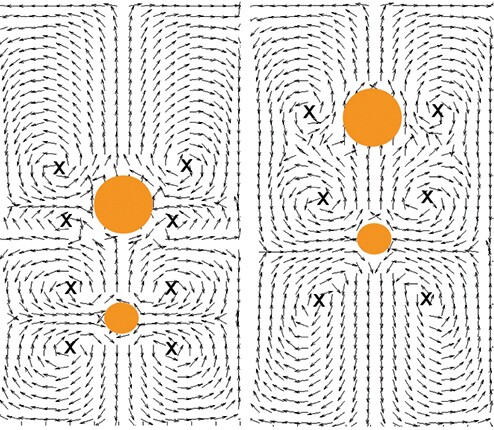Swimming spheres
DOI: 10.1063/PT.3.3074
The gliding motion of jellyfish, eels, and other sea creatures is not just captivating to watch in an aquarium. Understanding the mechanics of swimming can, for example, help life scientists explicate biological functions and engineers design tiny robots for targeted drug delivery. Now, Daphne Klotsa of the University of North Carolina at Chapel Hill and colleagues from the University of Nottingham in the UK have carried out a detailed observational and simulation study of an extraordinarily simple type of artificial swimmer: two spheres attached by a spring and placed in a saltwater bath. The researchers caused the bath to vibrate vertically, both to provide energy that the swimmer could convert into translational motion and to allow for control of the streaming Reynolds number—loosely speaking, the ratio of inertial to viscous forces acting on the swimmer. For low Reynolds number, the experimental team observed oscillations of the spheres, but no center-of-mass motion. When they raised the Reynolds number, however, by increasing the vibration frequency or amplitude, the simple swimmer began to move through the saltwater as it oscillated. The simulation cross section illustrated here shows the essential mechanism at play when the spherical components (filled circles) are of unequal size and density. Arrows give the direction of the liquid flow averaged over the spheres’ oscillation cycle. The crosses indicate vortex rings surrounding the spheres. At low Reynolds number (left), the flows around the two oscillating spheres are similar and the swimmer is stationary. High Reynolds number (right) breaks that symmetry of flow; indeed, a forceful jet of water emerges from below the smaller, denser sphere, propelling the swimmer upward. (D. Klotsa et al., Phys. Rev. Lett. 115, 248102, 2015, doi:10.1103/PhysRevLett.115.248102





